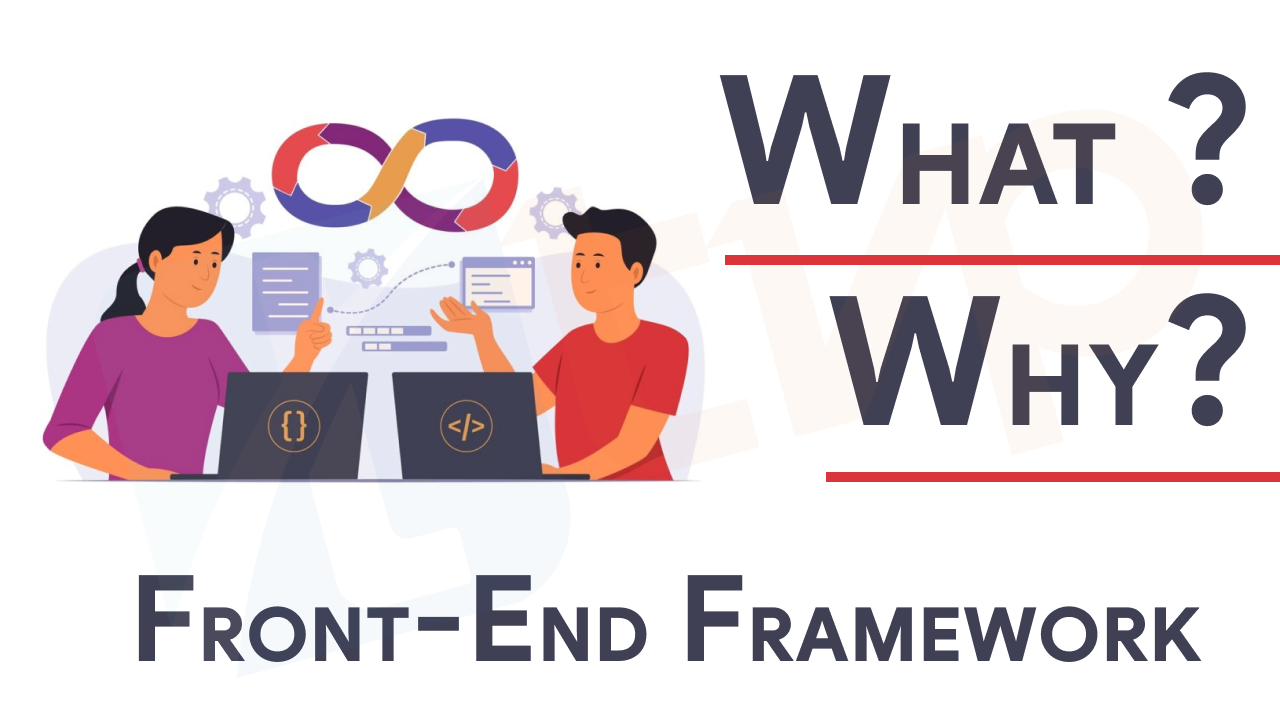What is fron-end framework or Javascript Framework? Why we use front-end framework?
Front-end frameworks are tools used by companies that create custom web applications. These frameworks help in building user interfaces by offering a set of pre-written code. This code follows specific standards, which include guidelines for organizing different sections of the code. By sticking to these standards, front-end frameworks make it simpler for developers to grasp and collaborate on code written by others. This is particularly handy when multiple developers are working on the same codebase.

The front end of a website or application is the user's side – the part they see and interact with. This involves the design, layout, user experience (UX), and any interactive features like submitting data through forms, fetching and displaying data in a grid or table system, uploading content, and playing media.
Achieving this can be done using JavaScript, a client-side scripting language or programming language. Many experienced users still prefer using JavaScript for developing the front end of their customized web applications. However, a challenge arises when they begin new projects because they have to write the code from scratch each time.
An experienced developer can write efficient and error-free code, maintaining the application's security standards. However, when multiple developers work on the same project, it becomes tedious to uphold a consistent code writing style and standards. This is crucial for ensuring that other developers can easily read the code. When a developer leaves a project, it can impact the project's life cycle and deadlines if proper standards and processes are not followed.
Another important point is that front-end development doesn't require extensive programming skills or knowledge of back-end or server-side development. The primary task of a front-end developer is to construct a user interface based on the data provided or required by the application programming interface (API). Therefore, learning front-end frameworks can be easily accomplished with knowledge of JavaScript alone.
All types of problems discussed above can be solved by front-end development. Let's now talk about front-end frameworks or JavaScript frameworks and their key benefits.
What is front-end web framwork?
A framework is like a bundle of essential components for websites, containing ready-made code that developers can use to tackle common development tasks. The framework lays down rules for shaping the app's architecture and offers a default skeleton structure. This structure can be extended and modified as needed for a custom web application.
Frameworks save developers from starting projects from scratch. Instead, they provide a solid foundation for implementing project-specific features.
Key benefits of front-end web framework
- Time Saving
When developing a project, if the client doesn't care which framework should be used – indeed, they probably aren't even aware of what we use – their main concern is getting results, and the faster, the better. Front-end frameworks allow us to create an immediate sense of progress from the beginning, fulfilling the client's expectations from day one. Faster development means a company or freelance developer can make more money, as the time freed up by the framework can be redirected to taking on more projects.
- Consistency and Efficiency
By using a front-end framework, developers can create consistent and reusable components that seamlessly fit into various projects. This uniformity not only saves substantial development time and effort but also guarantees that the code remains well-organized and easily maintainable.
- Cross-Browser Compatibility
In front-end development, a big challenge is making sure websites and web applications function consistently on various browsers and platforms. Front-end frameworks tackle this challenge by offering components that are compatible across different browsers. This ensures smooth operation on various devices.
- Rapid Prototyping and Iteration
Front-end frameworks offer a variety of ready-made components and tools, allowing developers to quickly prototype and refine designs. This speeds up the development process significantly and enables developers to concentrate on crafting engaging and effective user interfaces.
- Improved Collaboration
Front-end frameworks contribute to better collaboration between designers and developers by offering a shared set of tools and resources. This helps minimize communication barriers and ensures that projects are finished on time and within budget.
 Video Tutorials
Video Tutorials Tutorials
Tutorials Articles
Articles Courses
Courses